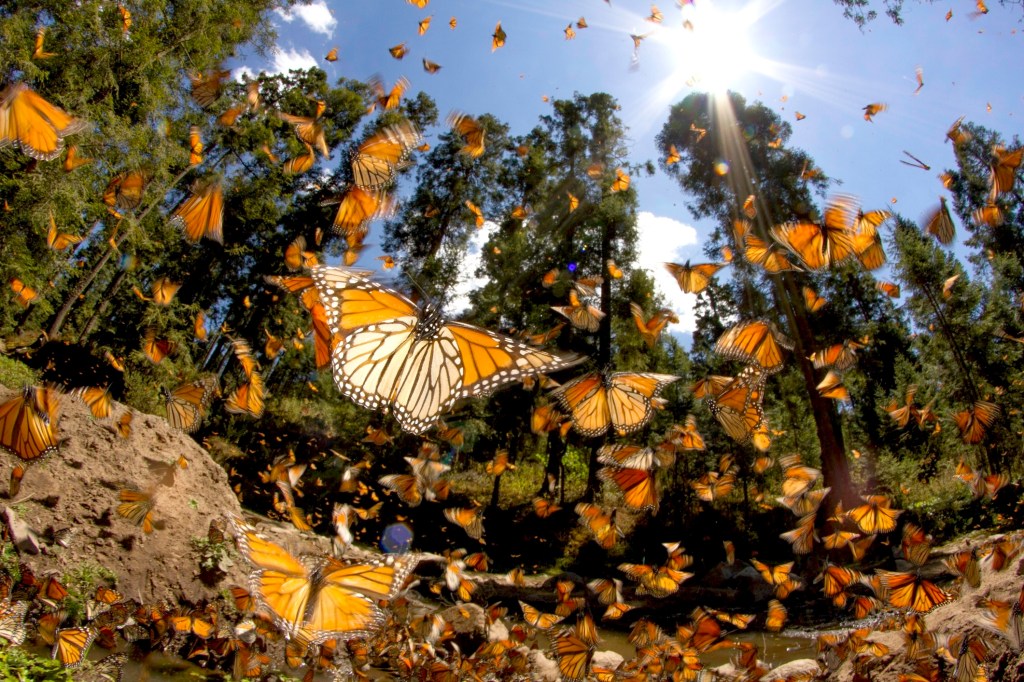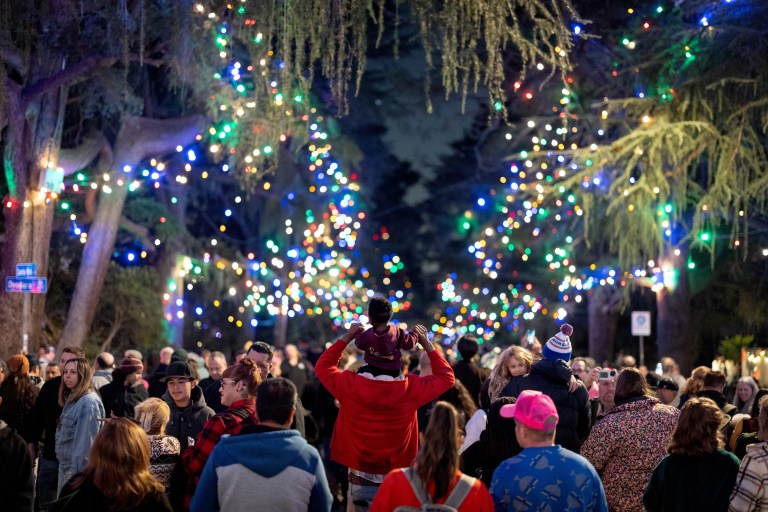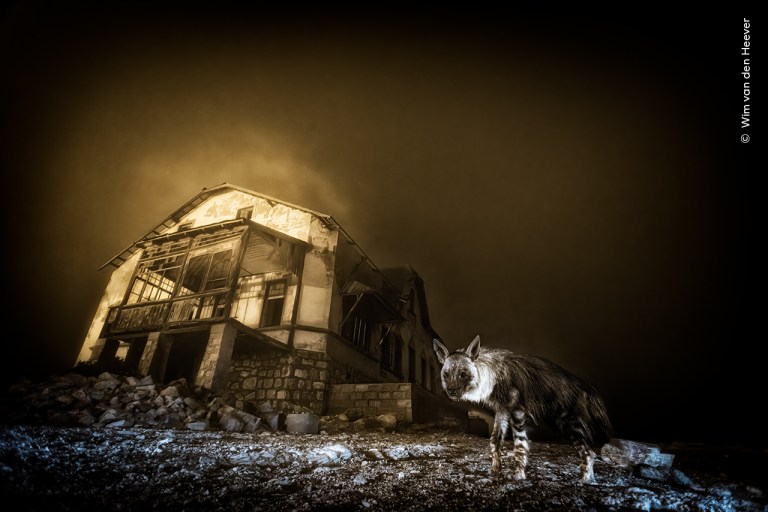At the Joya Redonda Monarch Butterfly Sanctuary, located at the foothills of two volcanoes in the tiny Mexican town of San Miguel Atlautla, clusters of orange-and-black butterflies roost among oyamel fir trees each winter. The insects’ migration south from colder regions is one of instinct, but their abundance in this particular area is in large part thanks to human efforts.
Millions of monarchs make the up to 3,000-mile annual excursion from the eastern United States and Canada to Mexico every year, taking off in October and traveling between 50 and 100 miles a day. Scientists aren’t totally sure how long ago the migration ritual began — some put it at 10,000 years, others at only a few centuries.

In recent decades, however, deforestation, herbicides, and disease have been decreasing the number of butterflies that flock to the fir trees. Per the World Wildlife Fund Mexico, the population of monarchs hibernating in the country’s forests during the 2022-2023 winter season decreased by 22% compared to 2021-2022. Currently, the International Union for the Conservation of Nature classifies the insects as a vulnerable species.
Eduardo Carrillo, director of the Atlautla Monitoring Brigade, is leading the charge to preserve and protect the butterflies’ and their habitat at the Joya Redonda sanctuary, Atlas Obscura reports.
Every Wednesday morning from November through March, Carrillo and other members of the brigade make an hour-long drive up a rocky road to camp out for the better part of a week, monitoring the butterflies’ arrival, tracking their numbers, and protecting their colonies from human and animal interference.
Carrillo had been working for the country’s National Parks Service when he first experienced the majestic migration. “I had the great surprise of seeing the butterflies emerge from an enormous colony in a tree,” he shared with the outlet, noting that thousands of the brightly colored insects took to the air around him. “It was something I had never seen before. From that point, I fell in love with the monarch butterfly.”
The monitoring brigade was founded in 2015, and Carrillo took over as director in 2021. Under his leadership, Joya Redonda’s colonies have increased tenfold. During the 2021-2022 season, there were just four colonized trees; the following season, there were 42.
“We’ve demonstrated what we can accomplish by monitoring human activity in the sanctuary,” Carrillo told Atlas. One such activity that poses harm to the insects is illegal logging, so the brigade must stay watchful into the night. Joya Redonda isn’t solely reserved for butterflies, though: It’s also a communal, multi-use space where people play sports, light bonfires, and let their cattle graze. During migration season, when these diversions are prohibited, locals sometimes express frustration.
To better ingratiate the monarchs to their human neighbors, Atlautla resident Tomás Bautista became a founding member of the local nonprofit EcoMonarca. The organization hosts the annual Monarch Butterfly Festival to educate the public and engage them in protecting the insects. Commissioned murals brighten the streets each March, workshops are held, and people of all ages develop a deepened appreciation for the winged visitors.
But there is still much to be done in service of monarchs. The endangered oyamel firs the insects exclusively hibernate in are at risk of extinction due to warming weather and other factors — so elsewhere in Mexico, conservationists are taking a two-pronged approach to the issue.
“I know that this sounds crazy, but we need to move the forests to a higher elevation,” Cuauhtémoc Sáenz-Romero, a forest geneticist at Universidad Michoacana de San Nicolás de Hidalgo in Morelia, told Science News.
While forests do migrate naturally, their movement isn’t fast enough to keep up with the changing climate, and the oyamel firs could be largely wiped out by 2090 without steps to prevent that. So Sáenz-Romero and a team of scientists collected oyamel seeds from the Monarch Butterfly Biosphere Reserve in Michoacán and grew them temporarily in a tree nursery.
Partnering with the Indigenous community in Calimaya, the team then planted around 960 of those trees at four different elevations in the area’s forest, hoping to provide cooler habitats for both the trees and the butterflies.
The technique is called “assisted migration,” and three years on, most of the saplings are adapting to their new habitat, per the researchers’ recently published study. “[These] planted stands could eventually serve as overwintering sites for the monarch butterfly under projected future climates,” the authors wrote.
It’s clear that for Carrillo, the preservation of the monarch butterfly will remain a passion. “I feel satisfied,” he told Atlas Obscura. “I’m happy that they come. To me, it is incredible that an insect that weighs half a gram [0.01 ounces] migrates more than 5,000 kilometers [around 3,000 miles]. Sometimes I simply can’t believe it.”











